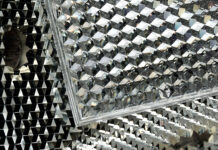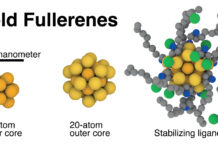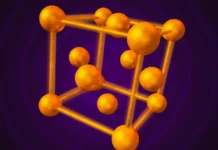
Joining different kinds of materials can lead to all kinds of breakthroughs. It’s an essential skill that allowed humans to make everything from skyscrapers (by reinforcing concrete with steel) to solar cells (by layering materials to herd electrons).
In electronics, joining different materials produces heterojunctions – the most fundamental components in solar cells, LEDs and computer chips. The smoother the seam between two materials, the more easily electrons flow across it, which is essential for how well electronic devices function. But they’re made up of crystals – rigid lattices of atoms – and they don’t take kindly to being mashed together.
In a study published March 8 in Science, Cornell University and University of Chicago scientists revealed a technique to “sew” two patches of crystals seamlessly together to create atomically thin fabrics.
The team wanted to do this by stitching different fabric-like, three-atom-thick crystals. “Usually these are grown in stages under very different conditions; grow one material first, stop the growth, change the condition, and start it again to grow another material,” said Jiwoong Park, professor of chemistry at the University of Chicago, and a senior author on the study.
Read more: Researchers sew atomic lattices seamlessly together
thumbnail courtesy of phys.org










